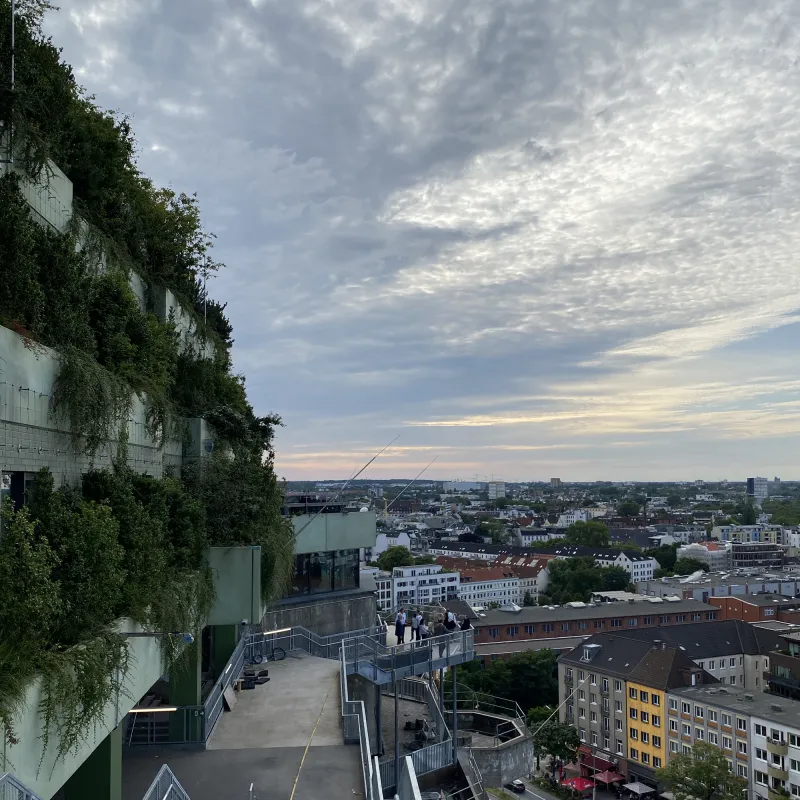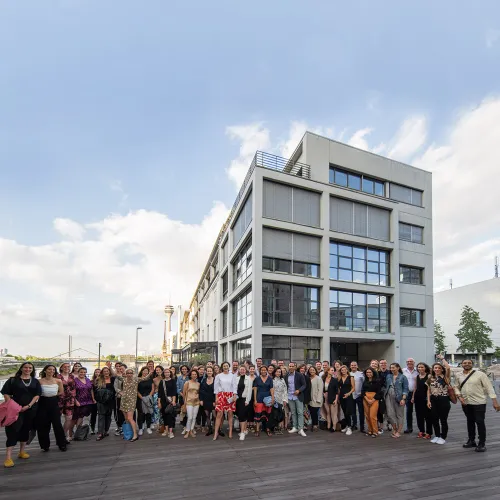News
Summer Client Event at our Location in Hamburg
Our summer event at our new location in Hamburg was a resounding success. Together with our clients, we had the privilege of touring the Hamburg BUNKER ahead of its grand opening. The captivating architectural tour once again highlighted the immense value of preserving historical structures and their importance to vibrant urban life.
The Hamburg BUNKER project is a remarkable transformation of a historic wartime relic into a multifunctional, sustainable, and culturally iconic landmark for the city. Its standout feature is the spectacular rooftop garden, a one-of-a-kind gem in Germany that offers breathtaking panoramic views, reaching as far as the Elbphilharmonie.
This ambitious redesign is recognized as one of the most innovative urban greening initiatives and is being scientifically guided by the Department of Building Technology and Design at TU Berlin.
For us, the BUNKER stands as a shining example of how historical preservation can be paired with forward-thinking solutions to create a sustainable, livable future – a vision perfectly aligned with our motto: Re:build the future!
A huge thank you to our Hamburg team for their impeccable organization and to all our guests for joining us to make this evening truly special!
Contant CSMM
Nina Eisenbrand, Head of Corporate Communications
Tel.: +49 (0)89 960 15 99-0
E-Mail: marketing@cs-mm.com








